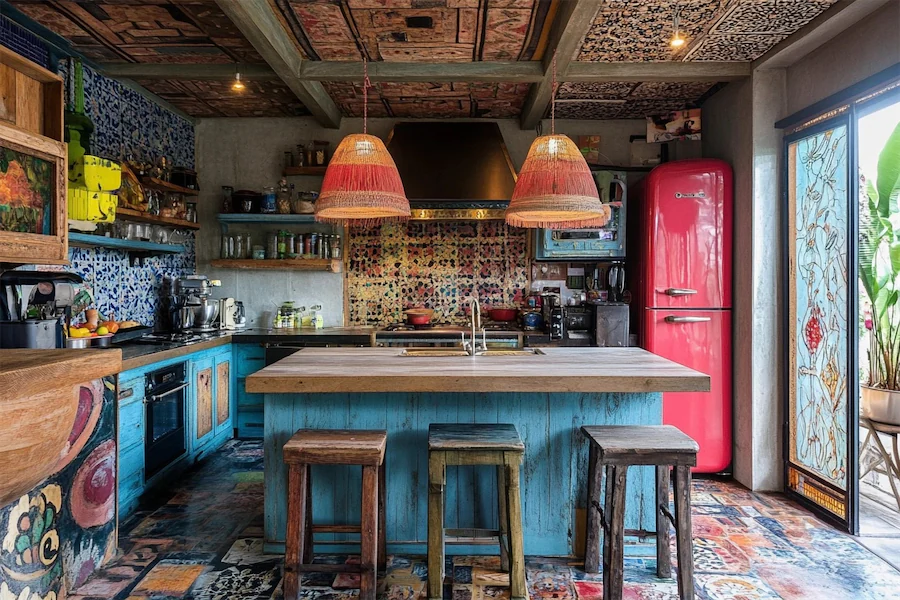An eclectic kitchen harmoniously blends diverse design elements, colors, and textures to create a space that reflects personal style and creativity. This article explores the history, key features, applications, and considerations when designing an eclectic kitchen.
Introduction to Eclectic Kitchens
Eclectic kitchens are characterized by their mix-and-match approach, combining various styles and periods to produce a unique and personalized cooking space. This design ethos encourages the integration of contrasting materials, patterns, and decor, resulting in a kitchen that is both functional and artistically expressive.
History and Origins of Eclectic Kitchens
The eclectic style emerged as a response to rigid design conventions, allowing for greater freedom in combining elements from different eras and movements. In kitchen design, this approach gained popularity as homeowners sought to create spaces that reflect their individual tastes and experiences, moving away from uniformity towards more personalized environments.
Key Features of Eclectic Kitchens
Eclectic kitchens are distinguished by several hallmark features:
- Diverse Color Palettes: Utilization of a wide range of colors, from vibrant hues to muted tones, often combined in unexpected ways to add visual interest.
- Mix of Materials and Textures: Incorporation of various materials such as wood, metal, glass, and stone, along with different textures, to create a layered and dynamic space.
- Unique Backsplashes: Use of distinctive materials like reclaimed wood, patterned wallpaper, or metal sheeting for backsplashes, serving as focal points in the kitchen.
- Open Shelving with Personal Displays: Showcasing eclectic collections, travel souvenirs, and artisanal pieces on open shelves to reflect personal stories and global influences.
- Statement Lighting: Inclusion of bold fixtures like oversized pendants, vintage chandeliers, or industrial sconces to add character and flair.
Applications of Eclectic Kitchens
The versatility of eclectic kitchen designs allows them to be adapted to various settings:
- Urban Apartments: Infusing a sense of individuality and warmth into city living spaces through eclectic decor and personalized touches.
- Country Homes: Enhancing the rustic charm with vintage elements, natural materials, and a relaxed layout that encourages gathering and creativity.
- Open-Concept Layouts: Creating seamless transitions between cooking and living areas by incorporating cohesive eclectic design elements throughout the space.
Considerations When Choosing an Eclectic Kitchen
When planning an eclectic kitchen, consider the following:
- Balance and Cohesion: While eclecticism embraces diversity, maintaining a harmonious balance of colors, patterns, and textures ensures the space feels cohesive rather than chaotic.
- Functionality: Ensure that the design elements enhance, rather than hinder, the practicality and functionality of the kitchen space.
- Personal Expression: Incorporate items that reflect your personal journey, travels, and experiences to make the space uniquely yours.
Conclusion
Eclectic kitchens offer a unique blend of creativity, warmth, and individuality, resulting in spaces that are both functional and deeply personal. By understanding their history, key features, and applications, you can design a kitchen that reflects your free-spirited style and eclectic tastes.
